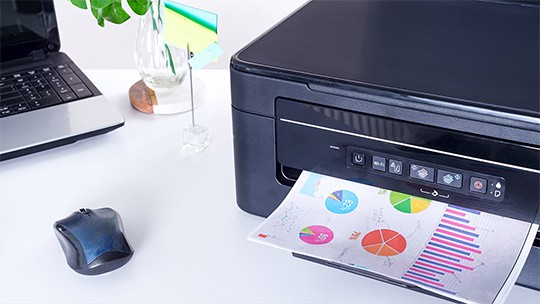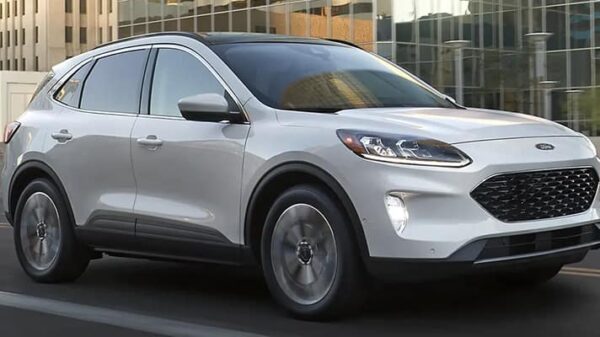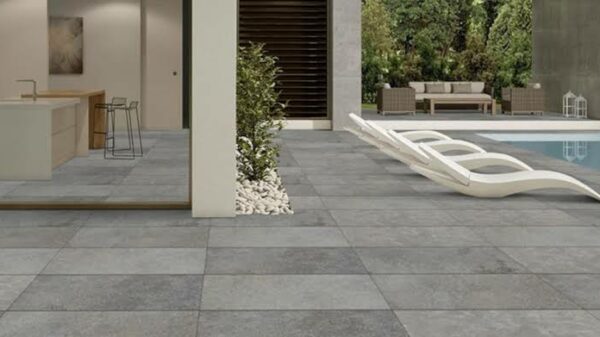Since the beginning of the Von der Leyen Commission in 2019, the European Union has set a course on the digital transition in the heavy industry. So far, the attempts have been quite successful, with technologies delivering significant efficiency and productivity gains, reducing energy consumption, and improving workers’ safety.
LiDAR scanning is already becoming an integral part of the European market registering a CAGR of 24% from 2021 to 2026. The reasons for growth are substantial benefits LiDAR can bring the EU heavy industry.
First, LiDAR is one of the most accurate precision-ranging techniques at present. A LiDAR scan displays an object in the form of a point cloud — hence a digital twin — which allows a user to measure it and see details with extreme precision.
Second, technology is characterized by its fast speed. A manual painting of an object may take weeks, while LiDAR scanning of a building of any size will require no more than a few days.
Third and most important, this remote sensing method contributes to employee safety. The scanners should not necessarily be in immediate proximity to the object at the moment of measuring, which increases the safety of the process.
How do all these benefits translate in the heavy industry? Here are the four most important trends in the use of LiDAR for industry modernization.
Reverse Engineering
Reverse engineering is the reproduction of another manufacturer’s product to understand its design and functions, change it, or improve it. In the EU, reverse engineering is allowed under Article 6 of the European Software Directive for interoperability purposes only, not for the independently created computer program.
A LiDAR scan will analyze the data on a particular object and reveal the potential areas of modernization. 3D printing technology currently drives all laser scanning technology trends in reverse engineering since it allows you to replicate the scanned part or change the original object.
Case in point: you have a heavy vehicle produced fifty years ago with no engineering drawings or models available. Instead of a complete reconstruction of a car, you can improve or replace old parts with new materials as long as you know the right measurements. LiDAR can gather all the required data with extra precision and reconstruct the vehicle, which will be much cheaper than building one from scratch.
Metal and Machinery Industry
Germany is by far the leading crude steel producer accounting for more than one-quarter of all crude steel produced in the region. Italy comes a close second producing 15% of crude steel within the EU-28.
What does this have to do with LiDAR? The biggest share of steel is used in the construction sector, like residential buildings, elements of infrastructure, and transportation. And given the rising level of urbanization, the need for steel will only grow. LiDAR might serve in the modernization of equipment and reconstruction of plants to optimize the time and expenses of steel production.
For example, LiDAR scanning can create a digital twin — a comprehensive 3D digital replica — of any facility. Interacting with it, operation managers will be able to see what exactly is happening on the factory floor at any time and which production adjustments are possible. There is no need to walk around the facility to pinpoint quality and safety issues. Managers can monitor machine capacity, material in stock, workflow, etc. to know when to introduce changes.
Automotive Industry
LiDAR scanning serves the autonomous driving industry by filling the gaps where other sensors struggle.
The development of self-driving cars started with radar placement to detect objects that surround a car, their distance, and speed. But the limitations came along: radars worked well with parking sensors and blind-spot monitors but were unable to detect the precise position, size, and shape of an object.
As a remote sensing measurement technology, LiDAR emits and re-captures laser pulses over a broad field of view, with high frequency and precision, ultimately localizing the objects up to 400 meters away. It detects the distance between objects and gives a comprehensive view of the traffic and the road conditions in low light and with depth perception.
Audi, a German Automotive manufacturer, is leveraging the benefits of LiDAR to ensure safety for both passengers and road users. Its e-Tron fleet vehicles — Audi 8A, in particular — have LiDAR sensor pods mounted at the front bottom of the car. They generate millions of laser pulses every second and present increased visibility of 150 meters with a FOV of 145° horizontal and 3.2° vertical. A 3D image of the environment around the vehicle is displayed in the form of a point cloud and is used to choose appropriate driving maneuvers for a vehicle.
AEC Market
Until recently, Architecture, Engineering, and Construction (AEC) firms had a very low level of technology penetration. With the appearance of software creating BIM models, the degree of technology integration has increased dramatically. LiDAR technology and computer vision are now the primary sensors for transforming real-world data into digital in the AEC market.
Take modeling with process plans, for instance. A 3D scan will allow you to accurately model any object in the cloud, and the software algorithms will analyze the shape of a cylinder and the size of the pipe run. Combined with other software tools, like AutoCAD Plant 3D, a user can create intelligent plan models and extract any isometric, which contributes to the speed and accuracy of the process.
Conclusion
LiDAR scanning has all the chances to close the data gaps in the heavy industry, be it reverse engineering, automotive, or AEC. Scans reduce friction in measurements, save time on capturing details, and even optimize costs. Despite the general reluctance toward adopting this digital technology, LiDAR can be the right tool to help Europe achieve its objectives in industrial modernization.
Founder and CEO of technology company Everscan



















































































































































































